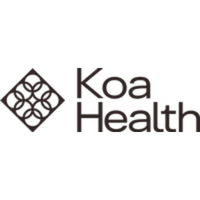Inclusivity matters: five ways to avoid bias in benefits offerings

By ensuring that all of your employees can access your company benefits, you’re increasing their value to staff. In other words, a more inclusive offering is a more effective one.
But to do that, you first have to avoid the inbuilt biases that can occur in company benefits. These biases can exclude certain employees, and because they’re often unconscious biases, you probably don’t even realise they exist. Yet they could be costing your company money and alienating employees.
Bias in digital products
Although we like to think that technology removes biases from our products and processes, this often isn’t the case. After all, they are still programmed and designed by humans, meaning unconscious biases may have been built into them.
So what does unconscious bias in a digital product look like? One example would be voice assistants. Research has shown that while voice assistants have a 92% accuracy in understanding white American males, that figure starts to fall across different genders, races and dialects. Scottish English, for instance, has just a 53% accuracy rate. And of course, this makes sense, because the main three voice assistants (Siri, Alexa and Cortana) were all created in California – largely by white American males.
The bias that exists within technology also affects your employee benefits, particularly if things like digital mental health support forms part of them. After all, an employee is likely to feel excluded by your offering if they’re unable to use or benefit from them.
However, there are some steps you can take to make your employee benefits more inclusive by avoiding bias. Here are four ways you can start the process.
How to avoid bias in your benefits offerings
1. Look at your own diversity
Bias is difficult to avoid in your selection of benefits if your own company isn’t diverse – particularly in management and leadership positions. It takes a diverse workforce to truly understand the impact of unconscious bias and apply that knowledge to the selection of benefits offerings.
To get around this, you’ve got to work even harder to achieve diversity within your business, one that reflects modern society and allows you to overcome inbuilt biases. At Koa Health, we understand how difficult this is to achieve, because it’s admittedly still a work in progress for us.
2. Be conscious about unconscious biases
Unconscious biases are so difficult to avoid because – as the name suggests – we don’t realise we’re making decisions based on these biases. This certainly applies to selecting digital products, which could include, for instance, language or visuals that exclude certain groups of people.
An example of this is the colours you see in an app. An inclusive design would cater for people with colour blindness, who are unable to distinguish between closely-matched colours. The same principles can also apply to the language used in digital products, which should be able to be read and understood by as many people as possible. At Koa, our content creation team has created a guide to avoiding bias in visual design and language, and this is used to review all new content.
3. Seek outside evaluation
To truly avoid bias and create accessible, inclusive offerings, companies must seek external support and objective evaluation. Whether that means working regularly with diversity and inclusivity consultants or conducting regular external audits to review your offerings, or both, insights from third parties offer crucial insights to help organisations better support all employees.
For example, in our latest external ethics audit, we found that while we worked hard to ensure our science-based wellbeing app had a reading level of eleven years old, after introducing new (and more robust) measures of evaluation, the actual reading level was closer to 13–14-years-old. Now that we’ve been made aware of the issue, we can work towards improving the language to get closer to our goal, and make the app more accessible to more people.
4. Be wary of biased Artificial Intelligence
There’s no doubt that Artificial Intelligence (AI) can add a lot of value to benefits. And logic seems to dictate that since AI isn’t human, then bias can’t exist. However, AI is only as good as the data that it was trained on, and if that data reflects biases that already exist in society, then the AI is likely to reflect it too.
Importantly, it’s not just about the data, biases can be introduced by data scientists as they create algorithms. For instance, in the US, the choice to use previous healthcare spend in an algorithm designed to predict future health-need led to discrimination against African Americans. This was because the data scientists had forgotten to account for the historic poor access, and in turn, low healthcare spend, of this group.
For this reason, any digital product you offer to your employees should have gone through an Algorithmic Impact Assessment. This helps to mitigate any potential biases that may have appeared in the software through the algorithm.
5. Hold vendors to account
As an employer, you’re not only responsible for the quality and effectiveness of the benefits you offer to staff, but also their inclusivity. For that reason, any third-party vendor you work with to provide employee benefits should be able to point out how they avoid bias in their product or service.
By creating an inclusive, bias-free benefits offering, you’re ensuring that all of your employees can benefit from it. But far from being simply a box-ticking exercise or a question of fairness, an inclusive benefits offering ultimately makes business sense, as the return on investment goes up as more employees make use of the resources offered at your organisation.
As strategy director, and head of ethics at Koa Health, I firmly believe that being inclusive, and promoting and protecting diversity in the workplace is both the right thing for employees and the companies that employ them, and also the most effective for a healthy and happy workforce. It presents a significant challenge, but avoiding bias and ensuring your benefits are useful and accessible to your entire team, is an important step on the road to a more inclusive workplace.
The author is Oliver Smith, strategy director & head of ethics at Koa Health.
This article is provided by Koa Health.
Supplied by REBA Associate Member, Koa Health
At Koa Health, we believe digital mental health solutions are the answer to mental health issues.







